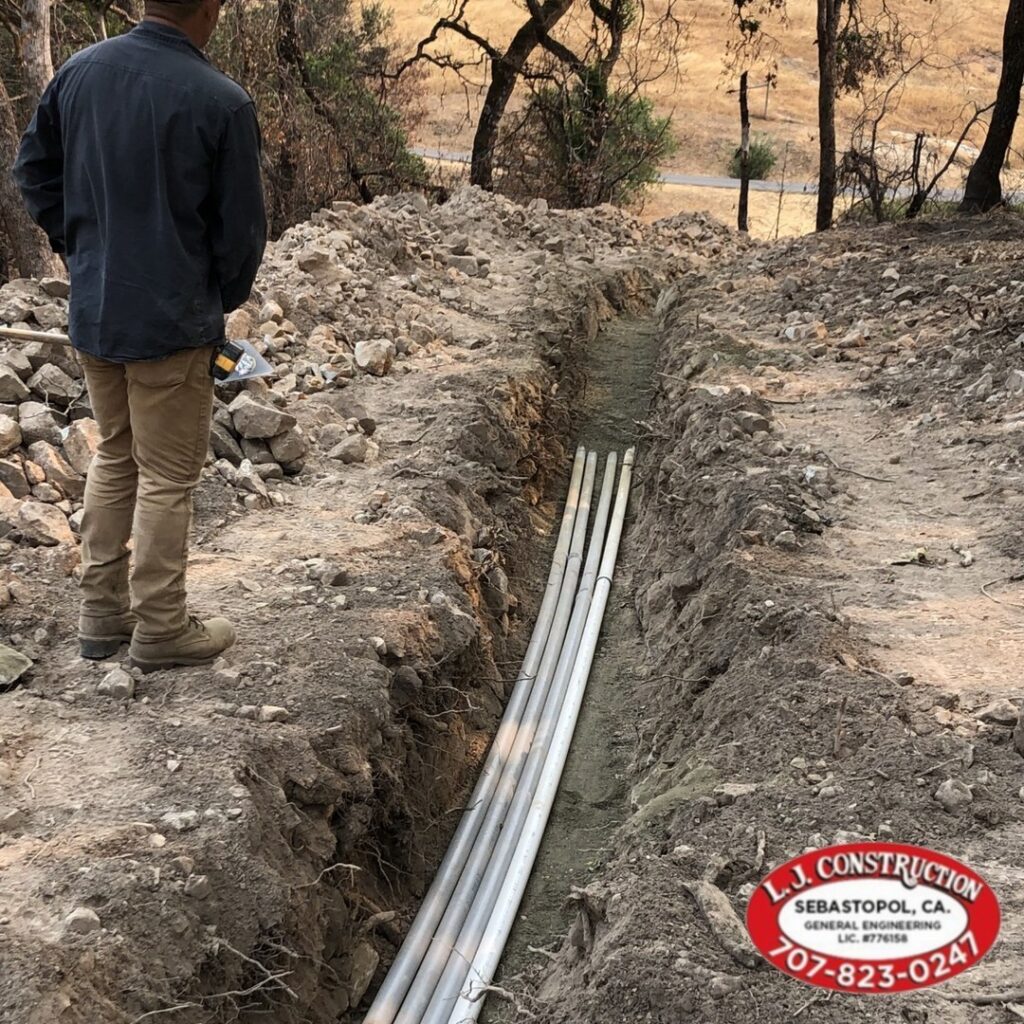The goal of septic tank pretreatment is to treat wastewater before it enters the main septic tank for further processing. The process is designed to improve the efficiency and longevity of septic systems by reducing the amount of solids that enter them. By removing or breaking down solids and organic matter in household wastewater, pretreatment helps prevent septic tanks and leach fields from becoming clogged or overloaded.
L.J. Construction are expert in Septic Tank Treatment Sonoma County. We specialize in providing top-quality installations, maintenance, and pretreatment services to ensure your septic system operates efficiently and effectively. Our dedicated team is committed to delivering exceptional results tailored to meet your specific needs.
But first, let’s explore the benefits of septic tank pretreatment and the different types of pretreatment systems available.
Benefits of Septic Tank Pretreatment
There are several benefits of septic tank pretreatment. By reducing the amount of solid waste that enters your septic tank, pretreatment helps ensure that it does not become overwhelmed. It can improve the efficiency of your septic tank and increase its lifespan.
Here are some other advantages of septic tank pretreatment.
Minimizes Solid Accumulation
Pretreatment processes break down organic matter and solids before they enter septic tanks, helping reduce the buildup of sludge and scum layers. Less accumulation and buildup reduced need for pumping and maintenance.
Improved Effluent Quality
By partially treating household wastewater before it reaches the septic tank, a pretreatment system helps ensure that cleaner effluent flows into the drainfield. Cleaner effluent can help lower the risk of the drainfield becoming clogged, extending the life of the system.
Protects the Drainfield
The pretreatment reduces the load on the drain field, helping maintain its absorption capabilities, even if your area has poor soil or high groundwater levels.
Further Breakdown of Contaminants
Some pretreatment systems use additional biological or chemical processes that further break down contaminants including gasses such as nitrogen and phosphorus. Such systems are usually used in environmentally sensitive areas.
Helps Prevent Groundwater Contamination
An overflowing septic tank can release contaminated water into nearby water bodies, polluting them. A septic tank pretreatment system can help prevent your septic tank from overflowing by reducing the amount of solids that enter it.
Compliance with Regulations
In many jurisdictions, especially in fragile ecosystems, local government bodies may require property owners with septic tanks to install pretreatment systems. In such areas, pretreatment systems can reduce the impact of wastewater on local water bodies by improving the efficiency of septic tank treatments in Sonoma County.
Potentially Increased System Capacity
With pretreatment, a septic system can often handle a higher load of wastewater. No wonder many households that use more water and families that have plans to build additions in future, install pretreatment systems on their properties.
Cost Savings
The benefits of pretreatment systems far outweigh their cost. A pretreatment system can help simplify septic system maintenance and improve the reliability of your system. It can prevent costly repairs, saving you money and headaches in the long run
Types of Pretreatment Systems
Here are some common types of septic tank pretreatment systems:
Aerobic Treatment Units
Or ATUs use oxygen to break down organic matter more efficiently than traditional septic systems. The process speeds up the decomposition of waste and results in a cleaner effluent that is discharged to the drain field.
Media Filters
A media filter consists of synthetic media or layers of sand or gravel that absorb contaminants as wastewater flows through the filter material. Use media filters if your area has poor soil or there isn’t enough space for a traditional drainfield.
Constructed Wetlands
These systems use plants and naturally occurring microorganisms in specially constructed wetlands to treat septic tank effluent. They mimic the treatment processes that occur in natural wetlands. Constructed wetlands can be very effective, but they require more space than other systems.
Mound Systems
Mound systems are a type of soil absorption system that are built above the soil surface. They are used in areas where the soil is too shallow or unsuitable for traditional septic systems. Effluent is pumped into a mound made of sand and treated as it moves downward.
Anaerobic Filter Systems
These systems contain a tank with a filtering medium, such as crushed stone or synthetic material. Anaerobic processes reduce the amount of solids and the load on the effluent. Anaerobic filter systems provide an additional level of pretreatment before the effluent reaches the drain field.
Some Factors That Can Affect the Cost of a Pretreatment System
Several factors can affect the cost of a pretreatment unit. Some of the most common ones include
- Size and capacity-Usually the larger the system, the more its cost
- System type-Aerobic systems tend to be more expensive than traditional aerobic and mound systems
- Local regulations-Ensuring compliance with stricter regulations could mean higher installation costs
- Site conditions-Installation costs can increase substantially if you want to install a pretreatment system on a slope or live close to a water body
L.J. Construction is a leading septic tank contractor in Sonoma County. Regardless of the type of pretreatment system you want to install, we can manage your installation project from beginning to end. To learn more, call (707) 823-0247.
President / Owner, L J Construction
LJ Construction is a family owned and operated business that was founded in 1966. We provide full-service septic tank repair, installation and maintenance. With years of experience in commercial and residential projects, our goal is to find a solution to all of your system issues. We adhere to the highest industry standards.
Our reputation is built on our name and we are proud to say LJ Construction offers more than integrity alone, we offer effective results. LJ Construction is licensed and insured and we look forward to serving you!

